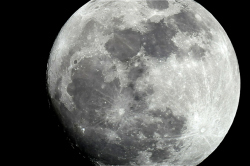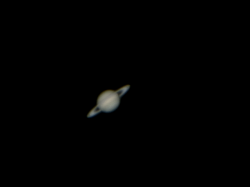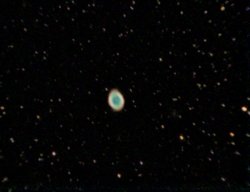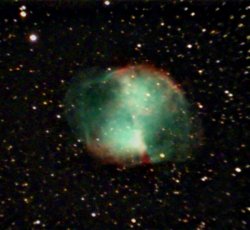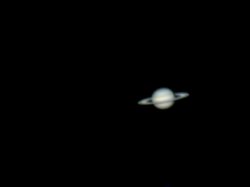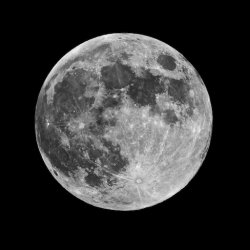Got a tip for us?
Let us know
Become a MacRumors Supporter for $50/year with no ads, ability to filter front page stories, and private forums.
Full moon fever!!/Lunar "X"/General moon shots
- Thread starter mtbdudex
- Start date
- Sort by reaction score
You are using an out of date browser. It may not display this or other websites correctly.
You should upgrade or use an alternative browser.
You should upgrade or use an alternative browser.
Here is a photo I took the other night. Nikon D5000, 18 frames shot, aligned and stacked in Registax, minor tweaks in PS.
budman1961, I've never stacked moon photos in Registax, can you post a single frame from one of the 18 sibe-by-side to the final composite?
I'm curious how much additional detail you get as a result.
nice Saturn also.
Just got my new Celestron EdgeHD 800 CGEM + some accy gear on Jul-1-2011:
We just got back from 4 days / 3 nights at Hillman Mich, north-east side of Lower Michigan - about 65 miles SE from Mackinaw Bridge, pretty dark skies.
Big family gathering, 31 people, at http://northernshorelodge.com/index.htm.
1st night was perfect for viewing, I set-up @ dusk, did rough polar alignment via ensure level and north via iPhone compass along the back tripod leg, set latitude to 45 deg.
Used that to view the moon/Saturn while still semi-light.
Once Polaris came up looked "up" the GEM polar hole, it was almost dead center!
Call me a Lucky 1st timer, I just tweaked the set-up slightly "left" and "higher" to get closer dialed onto the NCP , not worried about 100% dialed.
Was outside 10pm - 3am, learning my new gear, learning new skills.
re-did alignment with 2 star routine + 2 calibration stars.
Was pretty spot on for finding stuff, surfed the goto menus, the tours, etc.
Then, 1:30am it was really dark and I saw the ring nebula and Hercules star cluster for 1st time with my own eyes in my new scope....I'm bitten by this hobby bug! (all family members were fast asleep then, just me and the nite noises)
Then, a meteorite streaked for 2-3 seconds and ended with a burst like a mini firework.
I've seen and imaged meteorites, but never a burst ending.
Totally lost track of time, looked at the watch, 2:45am....holy crap time to call it a night and pack the gear back into the minivan.
8am came too fast, so tired, took a 2 hour power nap after lunch, hoping to further learn my gear and view more skies.
Other 2 nights were cloudy....but that 1st nights memories and lessons learned will carry me for more nights.
The first night out gear set-up shots - via iPhone:


First picts thru the EdgeHD 800 with my Canon T1i, using model #93644 for EdgeHD 8 OTA T-adapter, Jul-8-2011:


Collimation appeared to be spot on, I took a pict of it, is this "spot on"?

Gear all pack up this morning and heading home - that's my youngest of 3 kids looking back.

For now, I'm going to just reinforce the cardboard box the EdgeHD 800 OTA came in.
Its a good car transport case, the tripod and mount un-assembled layed on the floor and covered with a towel.
Possibly some piano hinges along the inside cardboard top seem, and I have some leftover drywall corner bead to add strength to the 4 vertical corners.
We just got back from 4 days / 3 nights at Hillman Mich, north-east side of Lower Michigan - about 65 miles SE from Mackinaw Bridge, pretty dark skies.
Big family gathering, 31 people, at http://northernshorelodge.com/index.htm.
1st night was perfect for viewing, I set-up @ dusk, did rough polar alignment via ensure level and north via iPhone compass along the back tripod leg, set latitude to 45 deg.
Used that to view the moon/Saturn while still semi-light.
Once Polaris came up looked "up" the GEM polar hole, it was almost dead center!
Call me a Lucky 1st timer, I just tweaked the set-up slightly "left" and "higher" to get closer dialed onto the NCP , not worried about 100% dialed.
Was outside 10pm - 3am, learning my new gear, learning new skills.
re-did alignment with 2 star routine + 2 calibration stars.
Was pretty spot on for finding stuff, surfed the goto menus, the tours, etc.
Then, 1:30am it was really dark and I saw the ring nebula and Hercules star cluster for 1st time with my own eyes in my new scope....I'm bitten by this hobby bug! (all family members were fast asleep then, just me and the nite noises)
Then, a meteorite streaked for 2-3 seconds and ended with a burst like a mini firework.
I've seen and imaged meteorites, but never a burst ending.
Totally lost track of time, looked at the watch, 2:45am....holy crap time to call it a night and pack the gear back into the minivan.
8am came too fast, so tired, took a 2 hour power nap after lunch, hoping to further learn my gear and view more skies.
Other 2 nights were cloudy....but that 1st nights memories and lessons learned will carry me for more nights.
The first night out gear set-up shots - via iPhone:


First picts thru the EdgeHD 800 with my Canon T1i, using model #93644 for EdgeHD 8 OTA T-adapter, Jul-8-2011:


Collimation appeared to be spot on, I took a pict of it, is this "spot on"?

Gear all pack up this morning and heading home - that's my youngest of 3 kids looking back.

For now, I'm going to just reinforce the cardboard box the EdgeHD 800 OTA came in.
Its a good car transport case, the tripod and mount un-assembled layed on the floor and covered with a towel.
Possibly some piano hinges along the inside cardboard top seem, and I have some leftover drywall corner bead to add strength to the 4 vertical corners.
Nice equipment, fantastic job on the photo's! Your moon is amazingly clear.
I have a Meade LX200 Classic 10", here are a couple I shot the other night, my camera is a Meade DSI II. The were both 50 exposures each, 45 seconds in duration. The individual files (.fits) were cleaned up in Fits Liberator (they were LRBG), combined and level adjusted in PS.
I think I saw a similar post over in Cloudy Nights, nice to have a fellow MAC person in the Astronomy community!
The first is M57, the Ring Nebula, the second, M27, the Dumbbell Nebula, lastly Saturn, about a month old, 4 minute avi, @ 10 fps, stacked in registax, finished off in PS.
Clear skies!
Andy
I have a Meade LX200 Classic 10", here are a couple I shot the other night, my camera is a Meade DSI II. The were both 50 exposures each, 45 seconds in duration. The individual files (.fits) were cleaned up in Fits Liberator (they were LRBG), combined and level adjusted in PS.
I think I saw a similar post over in Cloudy Nights, nice to have a fellow MAC person in the Astronomy community!
The first is M57, the Ring Nebula, the second, M27, the Dumbbell Nebula, lastly Saturn, about a month old, 4 minute avi, @ 10 fps, stacked in registax, finished off in PS.
Clear skies!
Andy
Attachments
Last edited:
that is one fantastic moon shot
Congrats on the new toys & the joy of learning them. Look forward to your shots in the future
Congrats on the new toys & the joy of learning them. Look forward to your shots in the future
Nice equipment, fantastic job on the photo's! Your moon is amazingly clear.
I have a Meade LX200 Classic 10", here are a couple I shot the other night, my camera is a Meade DSI II. The were both 50 exposures each, 45 seconds in duration. The individual files (.fits) were cleaned up in Fits Liberator (they were LRBG), combined and level adjusted in PS.
I think I saw a similar post over in Cloudy Nights, nice to have a fellow MAC person in the Astronomy community!
The first is M57, the Ring Nebula, the second, M27, the Dumbbell Nebula, lastly Saturn, about a month old, 4 minute avi, @ 10 fps, stacked in registax, finished off in PS.
Clear skies!
Andy
Sweet shots Andy.
Have you tried using a DSLR in video mode for the avi clips and processing those?
Not sure how that would turn our comapred to your Meade DSI II.
Since I don't have a dedicated telescope video cam I was toying with trying using my DSLR video mode instead.
I'm a member of both cloudy nights and astronomyforum.net, so far I'm just a lurker on cloudy nights but have posted on astronomyforum.net, including these in the Celestron forum as my "first night" experience.
Not sure where I'll have as my dedicated astro forum, I'll choose 1 as my home and lurk at the other.
How about you for dedicated astro forum?
For photos I'm active @ Canon P.O.T.N. and here (I love MacRumors photography community for the contests, challenges, etc).
That first night @ Hillman was crystal clear and low humidity, plus dark-dark.
Too bad I did not have piggy back stuff for the T1i, would have been perfect for wide field milky way imaging...
that is one fantastic moon shot
Congrats on the new toys & the joy of learning them. Look forward to your shots in the future
Thx - I'm still on the upward learning curve slope.
Just FYI and sorta funny....as my wife and I debated back and forth...........its not a "toy", it an "optical instrument"
Last edited:
Moon tonight via Celestron EdgeHD 800 with my Canon T1i, Jul-13-2011 11:28pm:
Two image's, each about 70% top/bottom due to crop sensor, RAW capture, basic PP done in Apple Aperture 3 (curves/sharpening), merged in CS5 for 1 image.
image is clickable for 1600 size pix

Two image's, each about 70% top/bottom due to crop sensor, RAW capture, basic PP done in Apple Aperture 3 (curves/sharpening), merged in CS5 for 1 image.
image is clickable for 1600 size pix

What connects your T1i to the EdgeHD?Moon tonight via Celestron EdgeHD 800 with my Canon T1i, Jul-13-2011 11:28pm:
Nice mosaic! I cant capture the whole disc either on my 10", I need to try stitching 2 together.
Good job!
Andy
Good job!
Andy
http://www.celestron.com/c3/product.php?ProdID=621 + http://www.amazon.com/gp/product/B000KNCB7CWhat connects your T1i to the EdgeHD?


Will I be able to use my standard Celestron SCT T-adapter 93633-A to attach my SLR camera to the EdgeHD?
Answer
Yes, you can use your standard SCT T-adapter to connect your film or digital SLR to the New EdgeHD optical tube assemblies (OTAs).
However, the EdgeHD has been optimized for astrophotography at a specific spacing between the scope and the camera image plane.
To take full advantage of the EdgeHD’s photographic performance, use either the model #93644 (EdgeHD 8” OTA) or model #93646 (9.25, 11” and 14” OTAs) T-adapters, which are designed to position your camera's image plane at the optimal distance.
Each T-adapter is designed for the optimum distance.
That specific spacing is 133.35mm or 5.25" for the 8" EdgeHD OTA.
For the 9.25", 11" and 14" OTAs it is 146mm or 5.75"

The same comments apply to other SCT OTA adapters such as radial guiders. They can be used with EdgeHD OTAs but weren't specifically designed for the EdgeHD series optimum distance.
Nice mosaic! I cant capture the whole disc either on my 10", I need to try stitching 2 together.
Good job!
Andy
Yep - we need to upgrade to FF for this
Thx, my first mosiac, actually really easy to do.
Here's what I did: Take 1st pict, just leave averything as is and move the scope via the controller, take 2nd pict.
With tracking on just up/down movement and everything is dialed in.
I did all PP on both exactly same (RAW) in Aperture 3 before export to CS5.
Lift adjustments and stamp repalce adjustments is sweet for this, however Lift adjustments will NOT get any base RAW adjustments you tweak from default, so gotta remember that.
Then, in CS5 just used the Panaroma action, save as TIFF to desktop, re-import into Aperture.
What I'll do next time is get a few mostly "empty space shots" with a portion of the moon in them so I can have a rule 1/3's mosiac.
Balance the added detail with the visual appeal of a big moon hanging in space.
Last edited:
As an Amazon Associate, MacRumors earns a commission from qualifying purchases made through links in this post.
Moon tonight via Celestron EdgeHD 800 with my Canon T1i, Jul-13-2011 11:28pm:
Two image's, each about 70% top/bottom due to crop sensor, RAW capture, basic PP done in Apple Aperture 3 (curves/sharpening), merged in CS5 for 1 image.
Another great pic
Was hoping to get some shots of the full moon rise over the next 2 days but the weather forecast calls for showers & potential T-storms over that time. Ugh
Here is something I took a few days ago (July 11, 2011):

Gibbous Moon July 11 2011 on Flickr you can access a larger image.
Gibbous moon July 11, 2011 taken with Astro-Tech AT72ED telescope (430mm f/6) and Nikon D5100 DSLR (ISO 200, 1/80 second, afocal projection, 10mm eyepiece, 24mm Nikon Ai Lens).

Gibbous Moon July 11 2011 on Flickr you can access a larger image.
Gibbous moon July 11, 2011 taken with Astro-Tech AT72ED telescope (430mm f/6) and Nikon D5100 DSLR (ISO 200, 1/80 second, afocal projection, 10mm eyepiece, 24mm Nikon Ai Lens).
Last edited:
Another image taken with the same equipment a few days prior to the shot above:

First Quarter Moon July 7 2011 on Flickr you can access a larger image.
First quarter moon July 7, 2011 taken with Astro-Tech AT72ED telescope (430mm f/6) and Nikon D5100 DSLR (ISO 100, 1/20 second, 2x barlow at prime focus).

First Quarter Moon July 7 2011 on Flickr you can access a larger image.
First quarter moon July 7, 2011 taken with Astro-Tech AT72ED telescope (430mm f/6) and Nikon D5100 DSLR (ISO 100, 1/20 second, 2x barlow at prime focus).
Last edited:
Full moon from tonight (relatively poor seeing, low clouds, taken during very brief partial break in the overcast).
Full moon July 14, 2011 taken with Astro-Tech AT72ED telescope (430mm f/6) and Nikon D5100 DSLR (ISO 100, 1/100 second, 2x barlow at prime focus).
Full moon July 14, 2011 taken with Astro-Tech AT72ED telescope (430mm f/6) and Nikon D5100 DSLR (ISO 100, 1/100 second, 2x barlow at prime focus).
Attachments
Last edited:
fpnc;
you are on a roll!
Very nice PP on your shots.
I've seen the moon PP so many ways, and also realize based upon moon location in sky, atmosphere conditions, etc. there is not one "proper" look for the moon.
However, in my mind somewhere there should be a "proper" or std/reference moon image for text book processing vs creative look of moon.
NASA? some other?
Full moon on clear night vs Full moon near horizon, etc.
I do know there is color to the moon, so when people B&W it that in my mind is "wrong", yet some like that appearance.
you are on a roll!
Very nice PP on your shots.
I've seen the moon PP so many ways, and also realize based upon moon location in sky, atmosphere conditions, etc. there is not one "proper" look for the moon.
However, in my mind somewhere there should be a "proper" or std/reference moon image for text book processing vs creative look of moon.
NASA? some other?
Full moon on clear night vs Full moon near horizon, etc.
I do know there is color to the moon, so when people B&W it that in my mind is "wrong", yet some like that appearance.
I process my astronomy pictures to reveal as much detail in the subject as possible while also keeping the color reasonably close to the norm (the actual object or to agree with typical representations). As for the moon, I think you want to make the craters, mountains, maria, and bright ray systems "pop" as much as possible as long as you don't introduce a completely artificial look or hard, over-sharpened edges.
You'll notice that in the three images that I posted the large-scale contrast increases with the increasing phase of the moon (i.e. the most contrast on the full moon, the least with the moon at first quarter). Part of the reason for that is my attempt to maintain detail at the terminator of the moon where you have multiple levels of shadow on the maria with a nearly full range of grayscale. However, with the full moon you have no shadows so I boost the effective contrast to produce a more detailed look to the maria, mid-tones and bright ray systems. Of the three images I think the one of the gibbous moon is the best balanced, the picture at first quarter is a little too flat and the shot of the full moon is a touch too dark in the maria.
Interestingly, those differences seem to correspond in a way with the seeing conditions when the photos were taken. The seeing conditions during the full moon where pretty poor, the first quarter was fair, and the gibbous moon was photographed under good conditions. Thus, I might rate these images in a similar manner, gibbous moon good, first quarter fair, and full moon poor (relatively).
It also makes a difference as to what scale you view the image. In my opinion there is nothing worse than showing a soft, mushy, flat LARGE image of the moon, but when taken at a smaller size it's often more pleasing to have a relatively low contrast and more "natural" image (because that's the way we see it with the naked eye). However, when you view the terminator of the moon through a telescope you'll see lots of contrast, shadows of varying degree, and near knife-edge detail between the sunlit and shadowed areas. Thus, the latter is what I try to duplicate with my large images of the moon (it's all for the detail).
You'll notice that in the three images that I posted the large-scale contrast increases with the increasing phase of the moon (i.e. the most contrast on the full moon, the least with the moon at first quarter). Part of the reason for that is my attempt to maintain detail at the terminator of the moon where you have multiple levels of shadow on the maria with a nearly full range of grayscale. However, with the full moon you have no shadows so I boost the effective contrast to produce a more detailed look to the maria, mid-tones and bright ray systems. Of the three images I think the one of the gibbous moon is the best balanced, the picture at first quarter is a little too flat and the shot of the full moon is a touch too dark in the maria.
Interestingly, those differences seem to correspond in a way with the seeing conditions when the photos were taken. The seeing conditions during the full moon where pretty poor, the first quarter was fair, and the gibbous moon was photographed under good conditions. Thus, I might rate these images in a similar manner, gibbous moon good, first quarter fair, and full moon poor (relatively).
It also makes a difference as to what scale you view the image. In my opinion there is nothing worse than showing a soft, mushy, flat LARGE image of the moon, but when taken at a smaller size it's often more pleasing to have a relatively low contrast and more "natural" image (because that's the way we see it with the naked eye). However, when you view the terminator of the moon through a telescope you'll see lots of contrast, shadows of varying degree, and near knife-edge detail between the sunlit and shadowed areas. Thus, the latter is what I try to duplicate with my large images of the moon (it's all for the detail).
Here is another image, a blast from the past (just over three years ago):

Crescent Moon with Earthshine July 7 2008 on Flickr you can view a larger image.
Taken during evening twilight with Nikon D300 using Nikkor AF-S 70-300mm G zoom lens at 300mm. Multi-image stack processed to show earthshine on "darkside" of the moon. Note a few stars in the background sky (brightest at upper left).

Crescent Moon with Earthshine July 7 2008 on Flickr you can view a larger image.
Taken during evening twilight with Nikon D300 using Nikkor AF-S 70-300mm G zoom lens at 300mm. Multi-image stack processed to show earthshine on "darkside" of the moon. Note a few stars in the background sky (brightest at upper left).
Two more images from a few years back.

Lunar Crater Theophilus and Apollo 11 Landing Site on Flickr you can view a larger image.
The multi-pointed star in the image at top center marks the spot of the Apollo 11 landing. Taken with a Celestron NexStar 5 coupled to a Nikon digital camera.

Cresent Moon with Earthshine on Flickr you can view a larger image.
The Crescent Moon shot was taken during early twilight with a 400mm Tele-Astranar f/6.3 telephoto lens coupled to a Nikon DSLR.
The Tele-Astranar is a manual focus, manual aperture preset lens that I purchased used for not much money. You can see a good bit of chromatic aberration on the bright limb of the moon, but overall not bad for such a cheap lens.

Lunar Crater Theophilus and Apollo 11 Landing Site on Flickr you can view a larger image.
The multi-pointed star in the image at top center marks the spot of the Apollo 11 landing. Taken with a Celestron NexStar 5 coupled to a Nikon digital camera.

Cresent Moon with Earthshine on Flickr you can view a larger image.
The Crescent Moon shot was taken during early twilight with a 400mm Tele-Astranar f/6.3 telephoto lens coupled to a Nikon DSLR.
The Tele-Astranar is a manual focus, manual aperture preset lens that I purchased used for not much money. You can see a good bit of chromatic aberration on the bright limb of the moon, but overall not bad for such a cheap lens.
The waning crescent moon taken about 12 hours ago (early Sunday morning). Astro-Tech AT72ED telescope (430mm f/6) and Nikon D5100 DSLR (ISO 100, 1/13 second, afocal projection, 10mm eyepiece, 24mm Nikon Ai Lens).

Waning Crescent Moon July 24 2011 on Flickr you can view a larger image.
From earlier this month, taken during late evening twilight. Astro-Tech AT72ED telescope (430mm, f/6) and Nikon D5100 DSLR (ISO 1600, 1/4 second, prime focus + 2X barlow).

Cresent Moonset July 2 2011 on Flickr you can view a larger image.

Waning Crescent Moon July 24 2011 on Flickr you can view a larger image.
From earlier this month, taken during late evening twilight. Astro-Tech AT72ED telescope (430mm, f/6) and Nikon D5100 DSLR (ISO 1600, 1/4 second, prime focus + 2X barlow).

Cresent Moonset July 2 2011 on Flickr you can view a larger image.
I process my astronomy pictures to reveal as much detail in the subject as possible while also keeping the color reasonably close to the norm (the actual object or to agree with typical representations). As for the moon, I think you want to make the craters, mountains, maria, and bright ray systems "pop" as much as possible as long as you don't introduce a completely artificial look or hard, over-sharpened edges.
You'll notice that in the three images that I posted the large-scale contrast increases with the increasing phase of the moon (i.e. the most contrast on the full moon, the least with the moon at first quarter). Part of the reason for that is my attempt to maintain detail at the terminator of the moon where you have multiple levels of shadow on the maria with a nearly full range of grayscale. However, with the full moon you have no shadows so I boost the effective contrast to produce a more detailed look to the maria, mid-tones and bright ray systems. Of the three images I think the one of the gibbous moon is the best balanced, the picture at first quarter is a little too flat and the shot of the full moon is a touch too dark in the maria.
Interestingly, those differences seem to correspond in a way with the seeing conditions when the photos were taken. The seeing conditions during the full moon where pretty poor, the first quarter was fair, and the gibbous moon was photographed under good conditions. Thus, I might rate these images in a similar manner, gibbous moon good, first quarter fair, and full moon poor (relatively).
It also makes a difference as to what scale you view the image. In my opinion there is nothing worse than showing a soft, mushy, flat LARGE image of the moon, but when taken at a smaller size it's often more pleasing to have a relatively low contrast and more "natural" image (because that's the way we see it with the naked eye). However, when you view the terminator of the moon through a telescope you'll see lots of contrast, shadows of varying degree, and near knife-edge detail between the sunlit and shadowed areas. Thus, the latter is what I try to duplicate with my large images of the moon (it's all for the detail).
Nice recent shots, and thank you for the above explanation.
Seeing conditions been tough here in SE Michigan, humidity really high, hazy, etc.
Looking like Mon-Wed the humidity will be relatively low and clear so I'll try and get my gear out.
Waning crescent moon detail taken on the morning of July 24, 2011. Captured with an Astro-Tech AT72ED telescope (430mm f/6) and Nikon D5100 DSLR ((ISO 400, 1/20 second, afocal projection, 10mm eyepiece, 24mm Nikon Ai lens). Processed in Aperture 3 to enhance the lunar details.

Waning Crescent Moon Detail on Flickr you can view a larger image.

Waning Crescent Moon Detail on Flickr you can view a larger image.
I lack a telescope and lens bigger than 220mm, so I can't get close detailed shots of the moon. So I went for a shot of the moon behind a thin cloud in the early morning light around sunrise.

Cloudy Morning Moon by Gerg1967, on Flickr

Cloudy Morning Moon by Gerg1967, on Flickr
The waxing crescent moon with earthshine, taken a few hours ago on Aug. 3, 2011. Captured with an Astro-Tech AT72ED telescope (430mm f/6) coupled at prime focus to a Nikon D5100 DSLR (a stack of eight unguided 1 second exposures at IOS 800).

Waxing Crescent Moon with Earthshine on Flickr there is additional information on this picture and a larger version of the image.
The sky was clear but VERY unstable tonight, so I decided to concentrate on the earthshine since any high-resolution work was impossible.

Waxing Crescent Moon with Earthshine on Flickr there is additional information on this picture and a larger version of the image.
The sky was clear but VERY unstable tonight, so I decided to concentrate on the earthshine since any high-resolution work was impossible.
Last edited:
Register on MacRumors! This sidebar will go away, and you'll see fewer ads.


